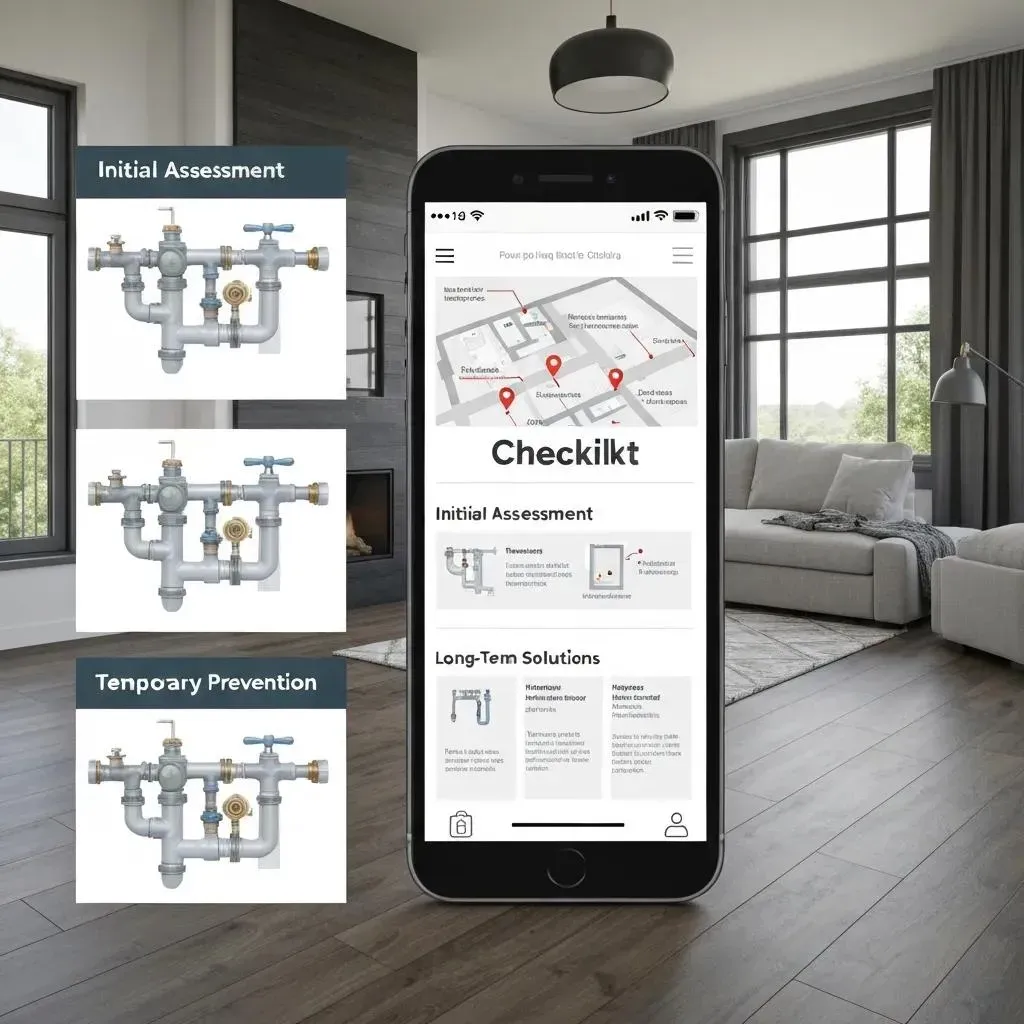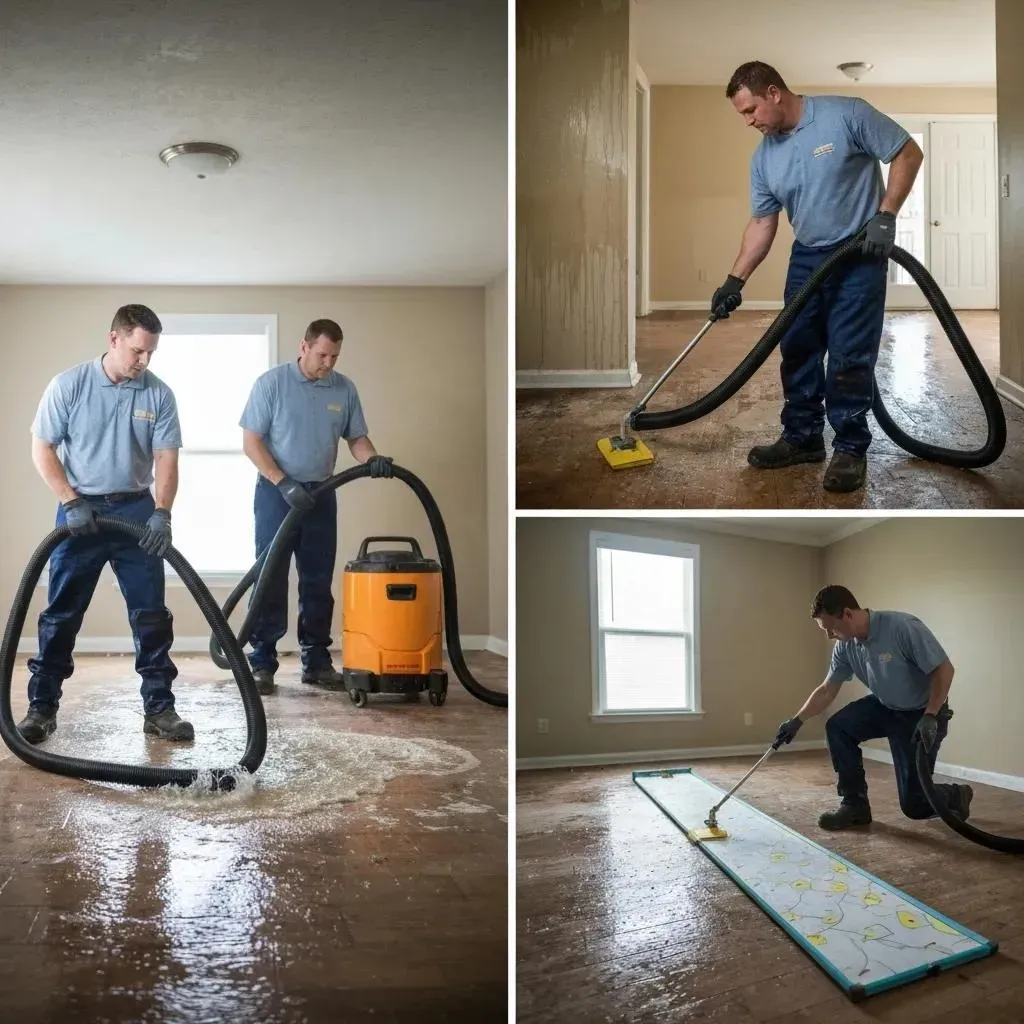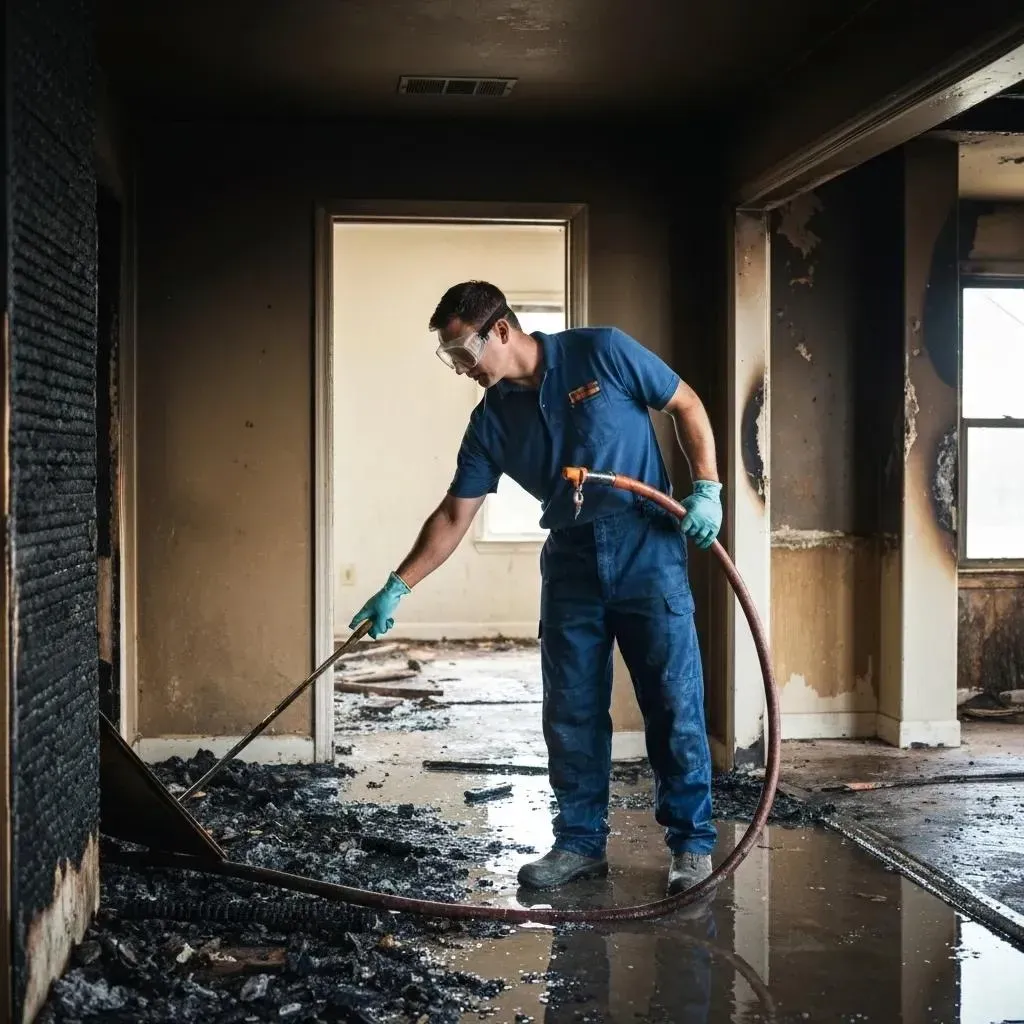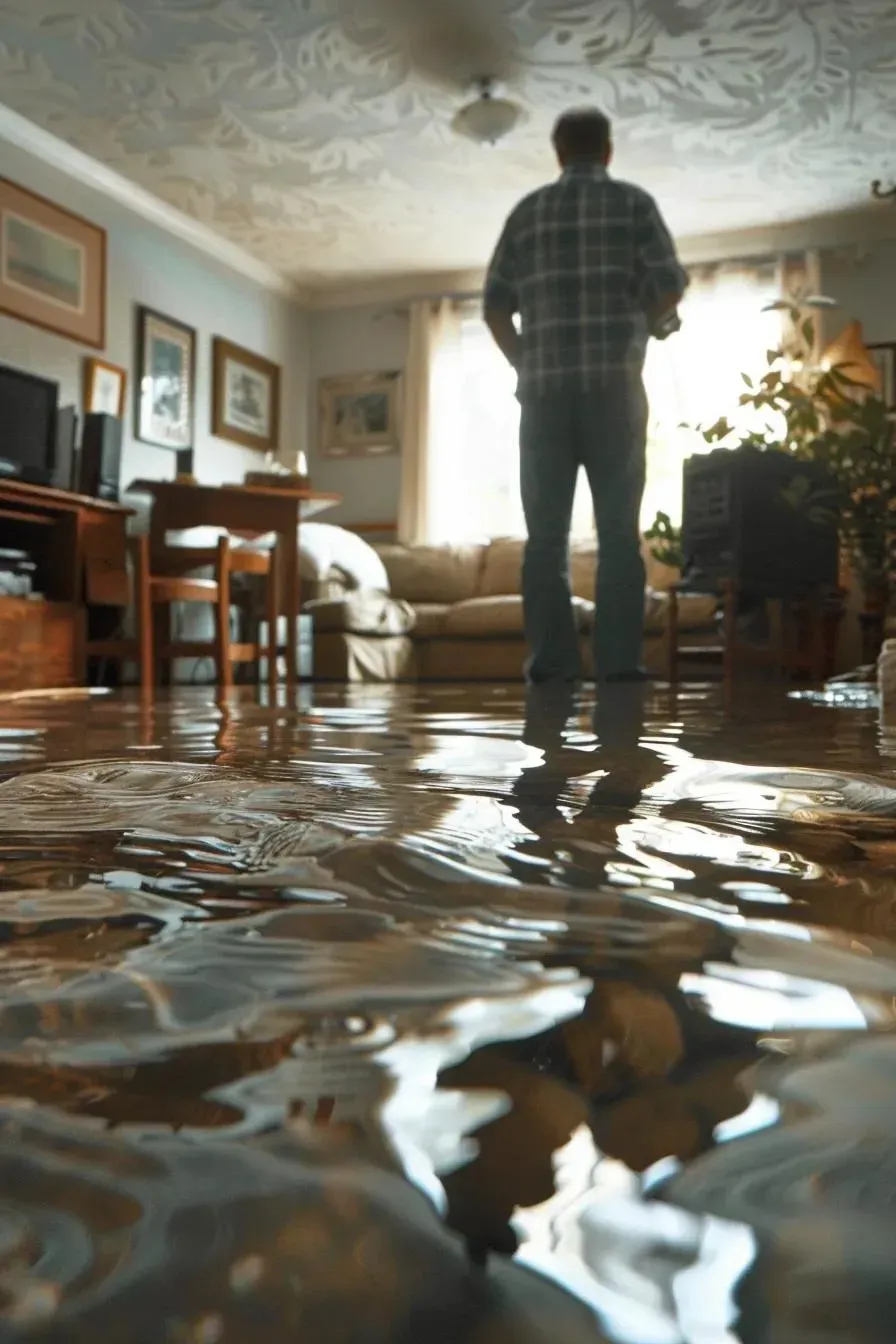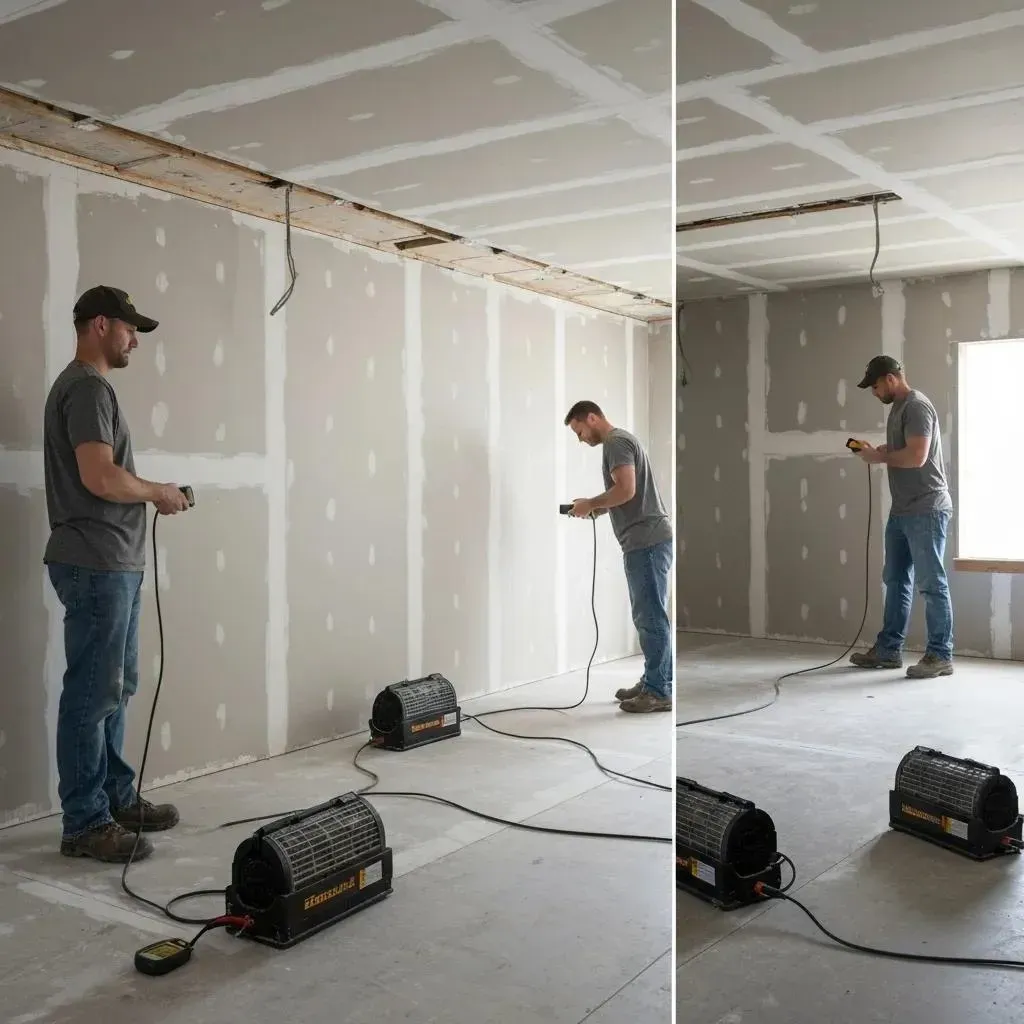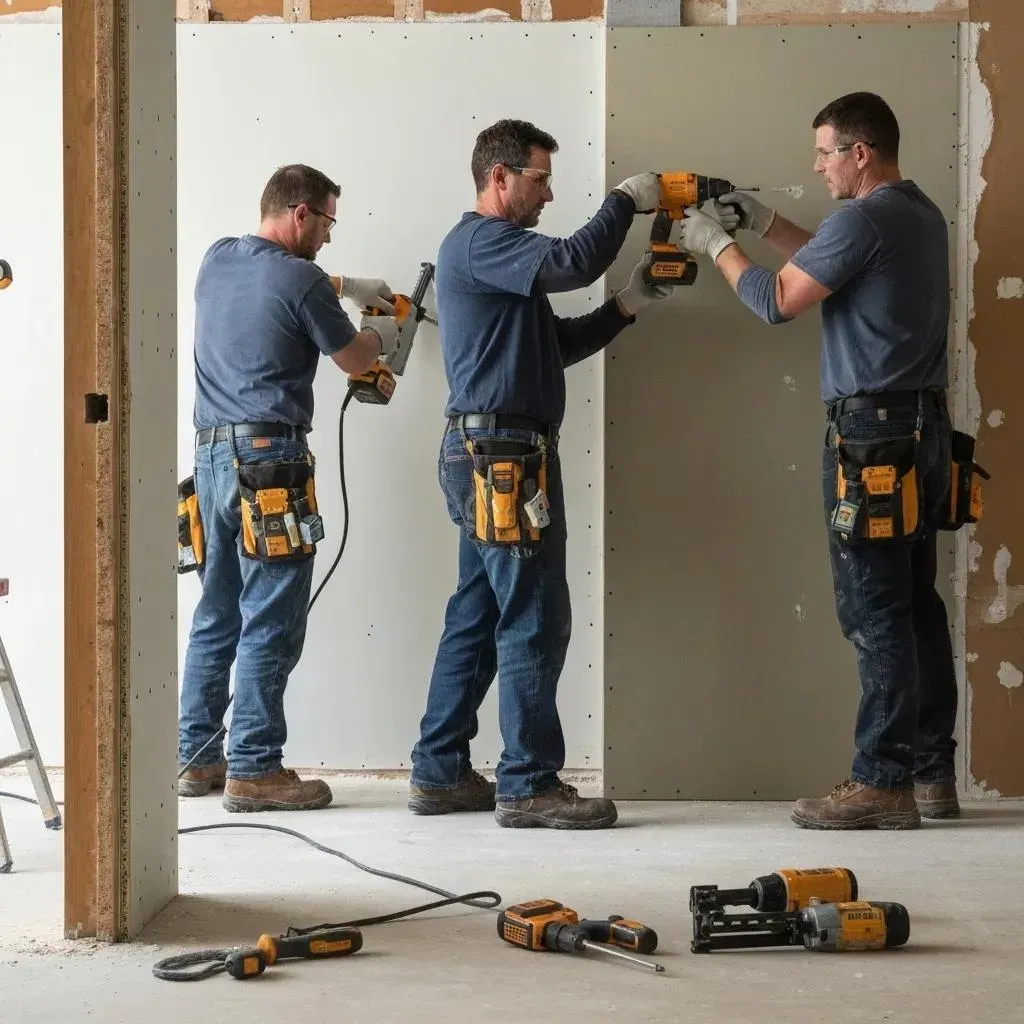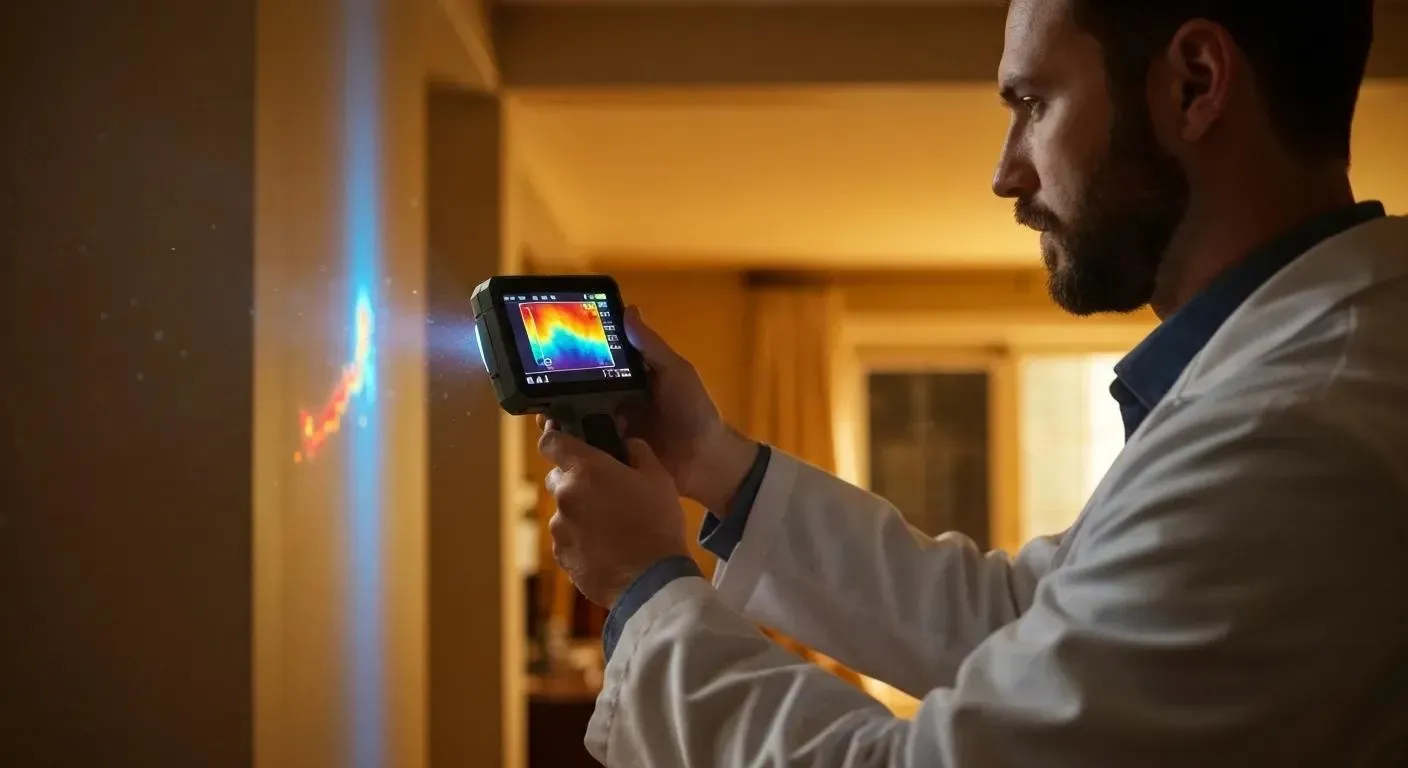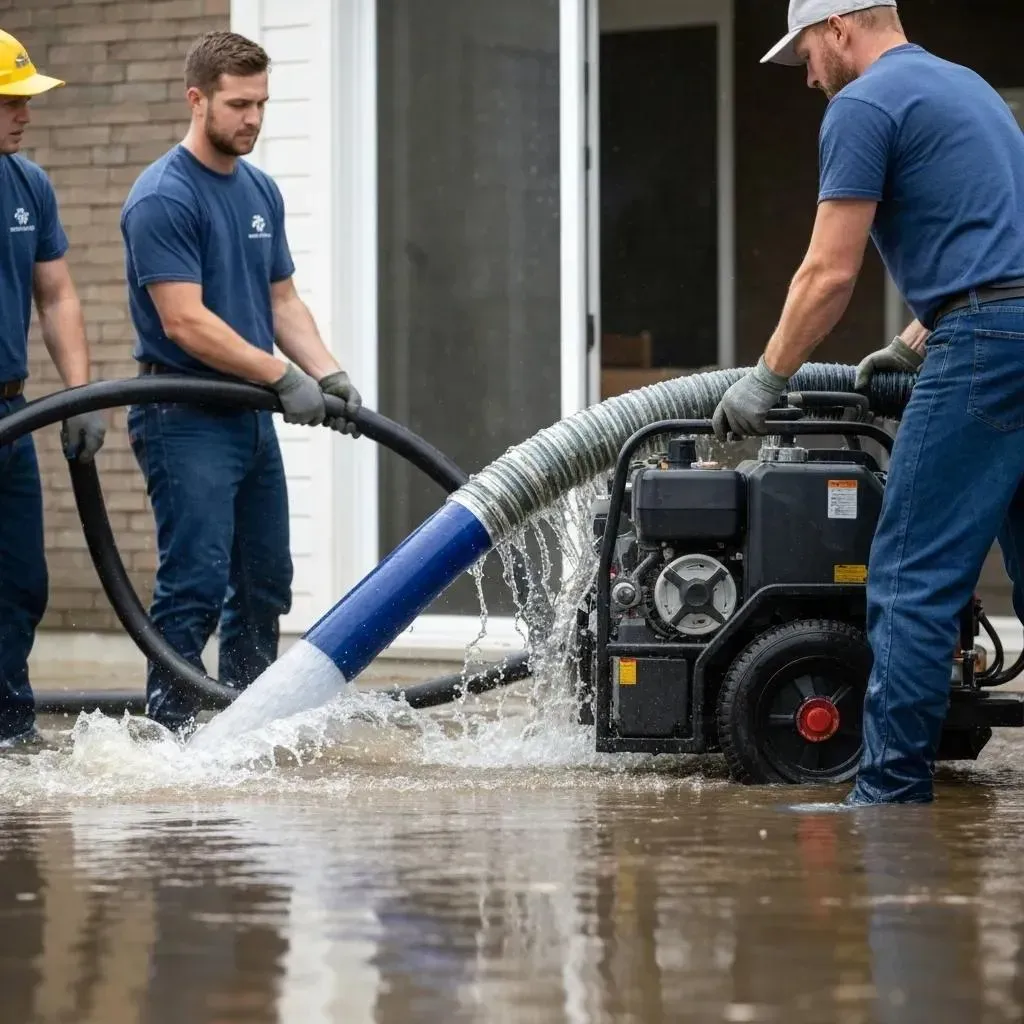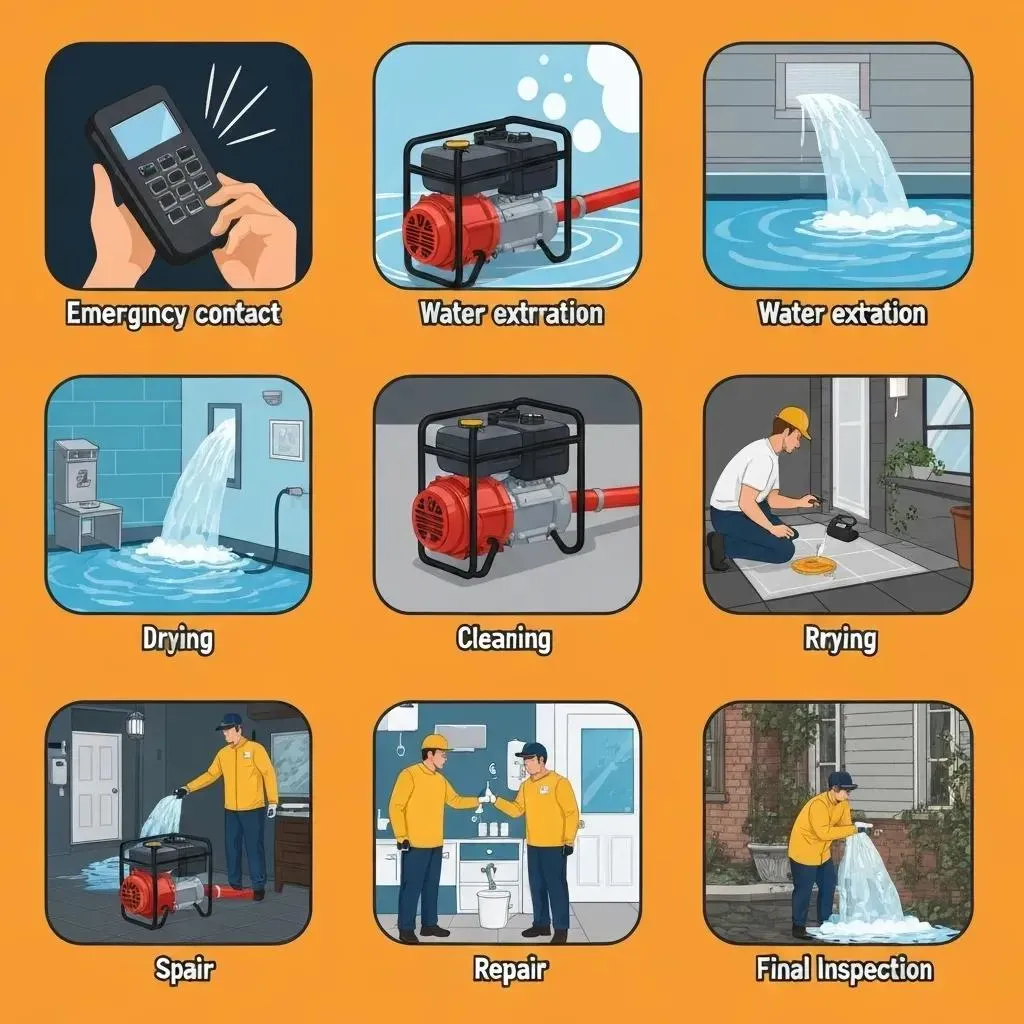Blog
Why You Need Professional Asbestos Abatement Contractors
When it comes to protecting your family from hidden dangers in your home, some jobs simply aren't DIY territory. That's especially true when dealing with asbestos. If you're considering any renovation work in an older Denver home, here's what you need to know about finding qualified asbestos abatement contractors.
First things first—what exactly do these specialized professionals do? Asbestos abatement contractors are trained experts who safely remove, encapsulate, or enclose materials containing asbestos from buildings. While this mineral was once celebrated for its remarkable fire-resistant qualities, we now understand that when disturbed, its microscopic fibers can cause devastating health conditions like mesothelioma, lung cancer, and asbestosis when inhaled.
For Denver homeowners, this isn't just about checking a box on your renovation checklist—it's about safeguarding your loved ones. Approximately 20% of public and commercial buildings across America still contain asbestos, and countless homes built before 1980 hide it in plain sight: popcorn ceilings, floor tiles, pipe insulation, and even HVAC ducts.
The danger emerges when these materials age or get disturbed during renovation work. That's why Colorado state law requires testing before anyone touches potentially asbestos-containing materials in most buildings. What might look like a simple ceiling scrape or wall demolition could actually release invisible, cancer-causing fibers throughout your home.
As Jack Leonard from the Environmental Management Institute puts it: "Too many times with asbestos, the hazards are underestimated. If there is going to be what I call a 'dusty operation' in an older home or building, you don't want to do that without having it checked [for asbestos] first. And leave abatement to the professionals."
I've seen the consequences of improper handling firsthand. I'm Mike Martinez, owner of Accountable Home Services, and I've personally overseen hundreds of asbestos abatement projects throughout Denver. Our team has helped countless homeowners safely renovate their properties by connecting them with certified asbestos abatement contractors who follow the strict protocols established by the EPA and OSHA.
The peace of mind that comes from knowing your renovation project won't compromise your family's health is truly priceless. Professional abatement isn't just about removing a hazardous material—it's about ensuring your home remains the safe haven it's meant to be.
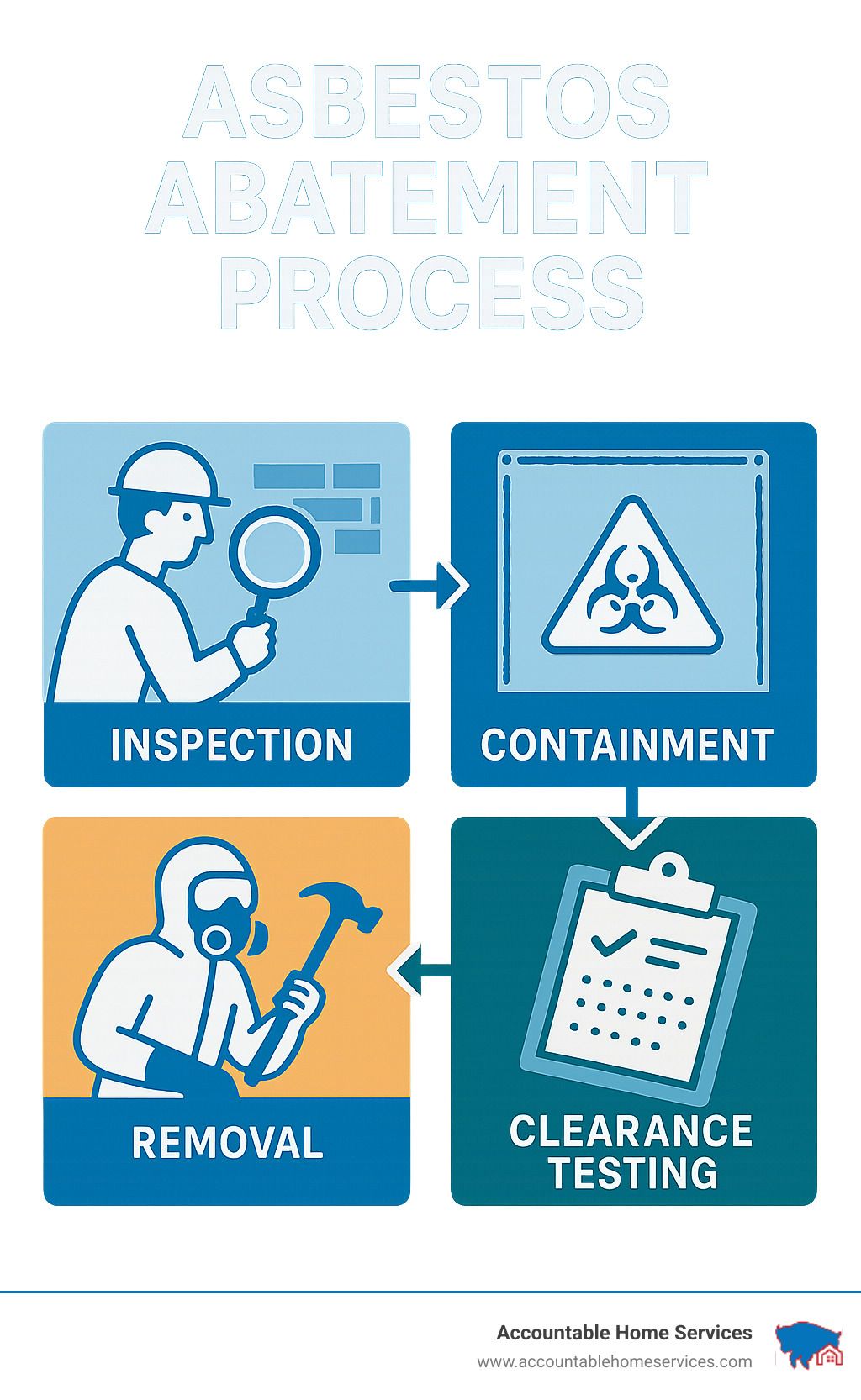
What Is Asbestos Abatement & Why It Matters
Imagine something 18,000 times thinner than a human hair that could silently damage your lungs for decades before you know it's there. That's asbestos—and that's why proper abatement matters so much to your family's health.
Asbestos abatement isn't just another home improvement project—it's a carefully orchestrated health and safety procedure designed to safely control, contain, and remove materials containing this dangerous mineral from your home. When those microscopic fibers (just 0.01 microns thick) become airborne, they can float invisibly for days, waiting to be inhaled by anyone nearby.
Once those fibers enter your lungs, they can become permanently lodged in the tissue, potentially triggering serious health conditions that might not show symptoms for 20-50 years. Each year, about 3,000 Americans hear the devastating diagnosis of mesothelioma, while an estimated 10,000 people die annually from asbestos-related diseases including:
- Mesothelioma (cancer affecting the lining of the lungs)
- Lung cancer
- Asbestosis (permanent scarring of lung tissue)
- Pleural plaques and thickening
As one Denver homeowner told us after her renovation project uncovered asbestos, "You can't put a price on knowing your kids aren't breathing in something that could harm them decades from now."
The scientific research on asbestos health effects is clear and sobering—this isn't a risk worth taking with DIY removal.
The Role of Licensed Professionals
Asbestos abatement contractors work within a comprehensive regulatory framework that exists for one reason: to protect you, your family, and your community from exposure. This safety net has three critical layers:
At the federal level, the EPA established the National Emission Standards for Hazardous Air Pollutants (NESHAP) and the Asbestos Hazard Emergency Response Act (AHERA). These regulations create the foundation for safe handling practices nationwide.
Colorado's Department of Public Health and Environment takes these protections even further with state-specific requirements. Here in Colorado, any contractor handling friable (easily crumbled) asbestos materials must maintain proper licensing and follow strict protocols.
Finally, many Denver-area municipalities add their own permit requirements and notification procedures before any abatement work can begin.
"Following these regulations isn't just about avoiding fines," explains Mike Martinez of Accountable Home Services. "It's about creating a systematic approach that genuinely protects everyone involved—your family, our workers, and your neighbors."
Licensed professionals understand when NESHAP notification is required—typically when removing asbestos-containing materials over specific thresholds (260 linear feet, 160 square feet, or 35 cubic feet for commercial projects). They also know how to properly test, contain, and dispose of these materials according to OSHA standards.
When you hire certified asbestos abatement contractors, you're not just paying for removal—you're investing in peace of mind that comes from knowing the invisible threat in your walls, ceilings or floors has been properly neutralized by experts who understand the science behind keeping your family safe.
Health Risks & Where Asbestos Hides in Buildings
The danger of asbestos lies in its ubiquity in older buildings combined with its devastating health effects. As epidemiologist Marty Kanarek from the University of Wisconsin School of Medicine and Public Health notes, "You have to live with the legacy of the past, and the legacy here is all the asbestos is still in place. This epidemic is not going to end anytime soon."
When we inspect Denver's charming older neighborhoods like Park Hill, Washington Park, and Congress Park, we consistently find asbestos lurking in unexpected places. These historic homes, built before asbestos regulations existed, often contain this dangerous material in everyday features you might not suspect.
Those decorative popcorn ceilings that were all the rage from the 1950s through the 1980s? They frequently contain asbestos. The vinyl floor tiles in your kitchen and the mastic adhesive holding them down? Potentially dangerous. Even the pipe insulation wrapping those old basement pipes and the vermiculite insulation keeping your attic warm could be harboring invisible threats.
We've found asbestos in HVAC duct insulation, siding shingles, drywall joint compound, and even textured paint used decades ago. About 20% of public and commercial buildings still contain asbestos materials, and the percentage is likely higher in residential properties built before 1980.
The good news is that these materials generally don't pose an immediate threat when they're intact and undisturbed. The problem emerges when they begin to deteriorate with age or get disturbed during renovation work. That's when microscopic fibers release into the air, potentially leading to serious health conditions like lung cancer, asbestosis, and mesothelioma.
Materials Nearing End-of-Life in 2020s
What many of our Denver clients don't realize is that asbestos-containing materials weren't designed to last forever. Most have functional lifespans ranging from 20-100 years, and many installations from the mid-century building boom are now reaching their expiration date.
Asbestos roof shingles installed in the 1950s are now approaching 70 years of age, becoming brittle and increasingly vulnerable to Colorado's harsh weather conditions. We've seen countless cases where aging pipe insulation begins to crumble, especially in areas that have experienced even minor water damage over the decades.
Those vintage vinyl floor tiles that seemed so durable? After decades of foot traffic, they're breaking down and releasing fibers when cracked. Even your home's popcorn ceiling becomes hazardous when damaged during lighting installations or after water leaks.
As a family-owned business serving communities across Boulder, Denver, and surrounding areas, we've encountered many surprised homeowners who find their seemingly intact materials are actually releasing dangerous fibers due to age-related deterioration. This isn't just a renovation concern—it's becoming an urgent health matter for many Colorado homes as these materials reach the end of their safe lifespan.
The finite lifespan of these materials means that even if your home's asbestos has been safely contained for decades, it might now be entering a more dangerous phase where professional assessment becomes crucial. That's why working with qualified asbestos abatement contractors isn't just a legal requirement—it's an essential step in protecting your family's long-term health.
When to Hire Asbestos Abatement Contractors
Let's face it – knowing the right time to call asbestos abatement contractors isn't something they teach you when you buy a home. But making this call at the right moment can be the difference between a smooth renovation and a health crisis for your family.
If you're wondering whether it's time to bring in the professionals, here are some key situations that should have you reaching for the phone:
Planning to renovate your pre-1980 Denver bungalow? That charming home in Washington Park or that mid-century ranch in Park Hill likely contains asbestos somewhere. Before you start swinging that sledgehammer or scraping that dated popcorn ceiling, testing is absolutely essential. In fact, Colorado state law requires asbestos testing before disturbing potentially contaminated materials in buildings constructed before 1988.
"Most homeowners simply don't realize how common asbestos was – and still is – in building materials," explains Anthony Rich, an experienced asbestos inspector we work with regularly. "I've seen too many DIY renovations turn into health hazards because people didn't know what they were dealing with."
Water damage from our notorious Colorado spring storms? Those damaged ceiling tiles might contain more than just water stains. Fire damage restoration? The same concern applies. After recent Denver hailstorms and winter weather events, we've seen a significant increase in emergency abatement needs across the metro area.
Buying an older home? Consider adding asbestos testing to your inspection checklist, especially if you're dreaming about knocking down walls or updating that vintage bathroom. A small investment now could save you thousands later.
Signs You Need "Asbestos Abatement Contractors" Now
Some situations can't wait for next week's appointment. Here's when you should be calling asbestos abatement contractors immediately:
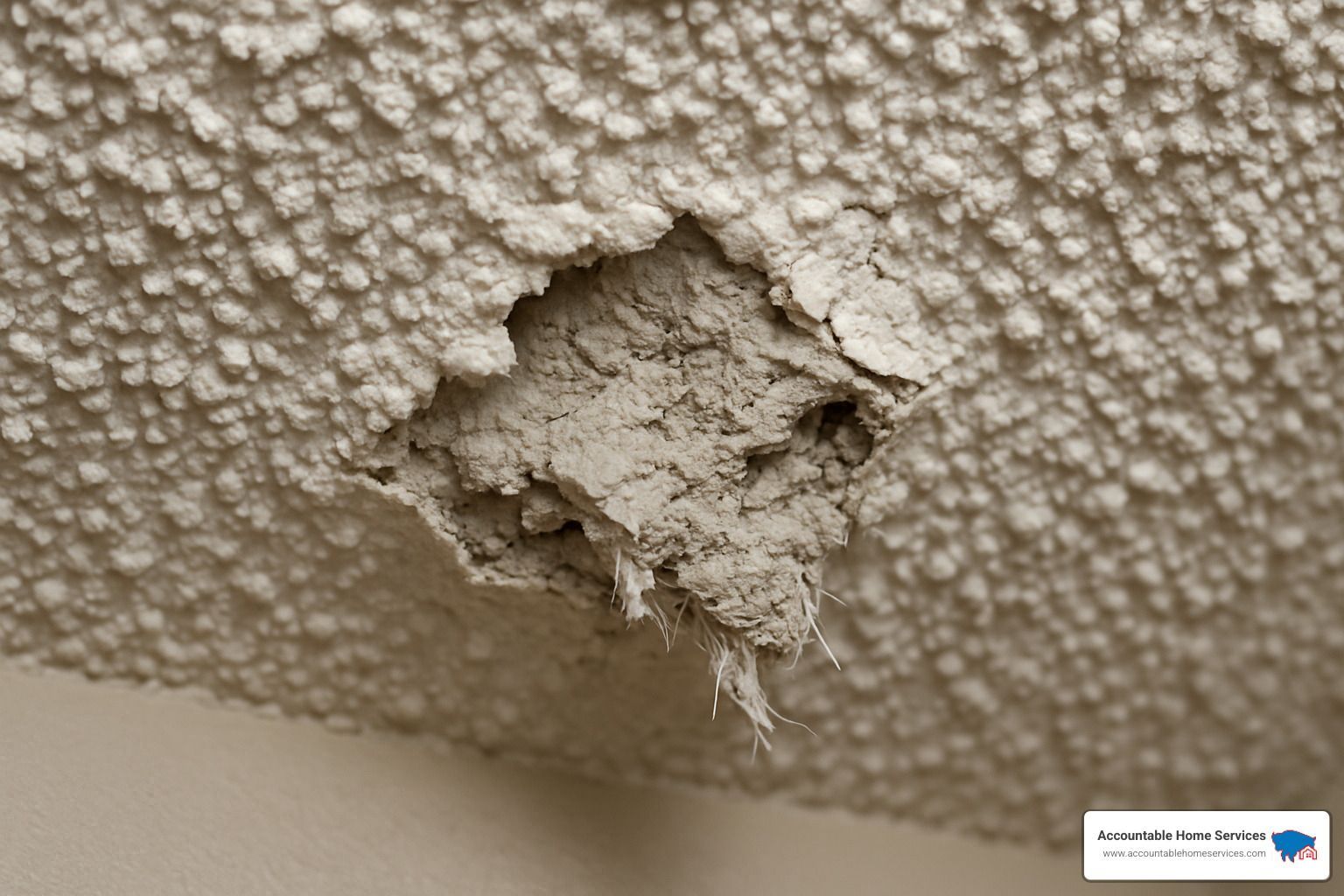
Notice materials crumbling or releasing a powdery residue in areas known to contain asbestos? That's not just dust – it could be dangerous fibers becoming airborne. Visible debris from deteriorating ceiling tiles, insulation, or flooring needs immediate professional attention.
Water damage can rapidly accelerate the deterioration of asbestos-containing materials. That slow leak behind your wall might be doing more than just cosmetic damage – it could be breaking down asbestos materials and releasing fibers.
Just last month, we responded to an emergency call from a Highlands homeowner who had enthusiastically started removing their popcorn ceiling as a weekend DIY project. Halfway through, they found information suggesting it likely contained asbestos. This created an urgent situation requiring professional containment and cleanup to prevent further contamination throughout their home.
If you've already started a project and suspect asbestos, stop work immediately and call professionals. Better to pause your renovation timeline than risk your family's health.
Timing Your Project With "Asbestos Abatement Contractors"
Smart timing can make your asbestos abatement project run smoothly while minimizing disruption to your daily life.
For standard residential projects in Denver, plan about 2-3 weeks ahead to allow for testing, permitting, and scheduling. Colorado's weather can impact project timing too – winter projects may require additional heating in containment areas to maintain safety standards.
If you're planning a larger renovation, coordinate abatement before other contractors arrive. There's nothing more frustrating than having your entire project team sitting idle while waiting for abatement work to finish. We've seen this happen too often when homeowners try to compress their timelines.
For families with young children or individuals with respiratory conditions, consider temporary relocation during the abatement process. While proper containment protocols keep asbestos from spreading, some families prefer the peace of mind of staying elsewhere during the work.
Don't forget about clearance testing – this final step ensures your space is completely safe before you move back in or continue with other renovations. Skipping this critical verification step undermines all the careful work that came before it.
For landlords and property managers, Colorado law requires proper tenant notification before beginning abatement work. We can help guide you through these requirements to ensure you're maintaining both safety and legal compliance.
When storms or disasters strike, our emergency response team can prioritize asbestos concerns as part of your restoration process. After all, the last thing you need during recovery is additional health worries for your family.
Need more information about testing before making decisions? Visit our detailed guide on Asbestos Testing to learn what to expect from this crucial first step.
Choosing Qualified Abatement Professionals
Let's be honest – when it comes to removing something as dangerous as asbestos from your home, the contractor you choose matters... a lot. This isn't like picking someone to paint your bedroom where the worst outcome is a color you don't love. The stakes are much higher.
Here in Colorado, the state takes asbestos seriously. That's why any legitimate asbestos abatement contractors must hold a license through Colorado's Department of Public Health and Environment. This license isn't just a piece of paper – it means they've jumped through some important hoops:
They've completed specialized AHERA training (that's the Asbestos Hazard Emergency Response Act – a mouthful, I know!)
They have a certified supervisor who'll be overseeing your project from start to finish
They carry proper environmental insurance (usually at least $1 million in coverage)
They understand exactly how to contain, remove, and dispose of asbestos safely
But here's something I've learned after years in this business – the state license is just the starting point. Think of it as the minimum barrier to entry, not the finish line. The best asbestos abatement contractors go several steps further.
Look for someone who has tackled projects similar to yours before. Removing asbestos from a 1950s ranch home in Washington Park presents different challenges than working on a commercial building. Experience matters.
Ask about their equipment – particularly their HEPA filtration systems. These specialized filters are crucial for capturing those microscopic asbestos fibers that make the material so dangerous in the first place.
Don't be shy about requesting references from similar projects. Any reputable contractor should be happy to connect you with satisfied customers.
Credentials Checklist for Homeowners
Before you sign on the dotted line with any asbestos abatement contractors, take time to verify these essential credentials:
Their current Colorado Asbestos Abatement Contractor License number – and yes, double-check it in the state database to make sure it's active
Certifications for both the supervisor and workers who'll be in your home – everyone on site should have proper AHERA training
Proof of both general liability and specific environmental impairment insurance
A detailed written plan explaining exactly how they'll contain the work area and protect the rest of your home
Information about who will conduct independent air quality testing after the job is complete (this should never be the same company doing the removal)
Documentation showing how they'll properly dispose of asbestos waste (improper disposal isn't just dangerous – it's illegal)
As one industry veteran put it: "When hiring an asbestos abatement company, and not doing it yourself, you're making the wisest and safest decision. But that decision is only as good as the contractor you choose."
Verifying Reputation of "Asbestos Abatement Contractors"
Paperwork and credentials tell part of the story, but reputation tells the rest. Before making your final decision:
Check their BBB rating – look for an A+ and pay attention to how they've handled any complaints. Even great companies occasionally have unhappy customers; what matters is how they respond.
Read through online reviews on Google, Angi, and HomeAdvisor. Look for patterns in the feedback, both positive and negative.
Call a few references with projects similar to yours. Ask specific questions: Was the work completed on time? Did they maintain proper containment? How did they handle unexpected issues?
Find out how many similar projects they've completed. You don't want your home to be their learning experience.
Take time to speak with the supervisor who'll be managing your project. This person will be making daily decisions that affect your home's safety, so you want someone knowledgeable and communicative.
At Accountable Home Services, we understand that our credentials are your peace of mind. That's why we maintain an A+ BBB rating and can happily connect you with families throughout Denver, Boulder, Longmont and surrounding communities who've trusted us with their asbestos abatement projects. We believe transparency builds trust, which is why we're always ready to share our qualifications, experience, and approach to keeping your family safe during asbestos removal.
Looking for more detailed information about professional asbestos removal? Check out our Professional Asbestos Removal Company page for additional insights into our qualifications and approach.
The Asbestos Abatement Process & Safety Measures
When asbestos abatement contractors arrive at your home, they follow a carefully orchestrated process that prioritizes safety above all else. Having overseen hundreds of abatement projects across Denver, I've found that homeowners feel more at ease when they understand exactly what will happen during this critical work.
The process begins with a thorough inspection. Certified professionals carefully examine suspicious materials in your home, taking samples that are sent to specialized laboratories for analysis. This critical first step determines exactly what we're dealing with and guides the entire abatement plan.
Once asbestos is confirmed, the real preparation begins. The work area transforms as technicians carefully seal it off with heavy plastic sheeting and industrial-strength tape, creating what we call a "containment zone." We always disable HVAC systems during this stage to prevent any possibility of cross-contamination throughout your home.
One of the most important safety measures is establishing negative air pressure. As our technician Dave often explains to homeowners: "Think of it like creating a vacuum inside the work area. Air can come in, but nothing—especially no asbestos fibers—can get out." This is achieved using specialized HEPA-filtered machines that continuously clean the air while maintaining this crucial pressure differential.
Before any removal begins, our team suits up in protective gear that might look a bit intimidating—full-face respirators, disposable coveralls that cover them from head to toe, gloves, and boot covers. This equipment isn't just for show; it's their essential protection against a microscopic but serious threat.
During removal—the most common approach for Denver homes undergoing renovation—we use specialized wetting techniques. By keeping materials damp throughout the process, we dramatically reduce the number of fibers that might become airborne. It's a simple concept with powerful protective benefits.
Once materials are removed, they're carefully double-bagged in specially labeled containers. These aren't ordinary trash bags—they're designed specifically for hazardous waste and must be disposed of at authorized facilities. We provide complete documentation of this disposal, which can be important for future home sales.
The decontamination process is something we take extremely seriously. Our technicians follow strict protocols to ensure they don't track even microscopic amounts of asbestos outside the work area. This typically involves a multi-stage cleaning process before they exit the containment zone.
Perhaps the most important step is what happens after the visible work is done. We arrange for independent air sampling to verify the area is genuinely safe before removing any containment barriers. This third-party verification provides peace of mind that your home is truly asbestos-free.
Finally, we provide complete documentation of your project—from initial testing through final clearance—giving you a permanent record of the proper abatement work.
Equipment That Keeps Everyone Safe
The specialized equipment used during asbestos abatement isn't just impressive technology—it's your family's invisible shield against potential health hazards.
HEPA vacuums are the workhorses of any abatement project. Unlike the vacuum in your closet, these sophisticated machines capture 99.97% of particles as small as 0.3 microns—tiny enough to trap asbestos fibers that would slip right through ordinary filters.
The negative air machines I mentioned earlier are essentially industrial-strength air purifiers with a crucial added function. They not only filter air but create that vital pressure differential that keeps contaminated air contained within the work area.
Our technicians' personal protective equipment includes respirators specifically certified for asbestos work. These aren't the same masks you might wear for dusty home projects—they're specially designed and fitted to capture the microscopic fibers that make asbestos so dangerous.
Before leaving the work area, our team uses specialized decontamination units that allow them to thoroughly clean themselves. These multi-chamber systems might seem elaborate, but they're essential to preventing cross-contamination.
The specialized wetting agents we use might look like simple spray bottles, but they contain surfactants specifically designed for asbestos work. These solutions help keep fibers bound together rather than floating freely in the air.
Throughout the project, sensitive air monitoring equipment tracks air quality. As our project manager Mike often tells clients, "The equipment is only as effective as the protocols behind it. That's why we follow strict procedures that exceed regulatory requirements."
At Accountable Home Services, we've invested in top-tier equipment because we understand what's at stake. When you're removing a substance that can cause serious health issues decades after exposure, there's simply no room for cutting corners on safety.
Costs, Regulations & Penalties
Let's talk money – because I know that's what you're probably wondering about. How much is this going to set you back?
Most Denver homeowners spend between $1,200 and $3,200 for asbestos abatement. Of course, that's just the average. I've seen small, straightforward projects cost as little as $450, while extensive contamination can push prices north of $10,000.
What determines where your project falls on this spectrum? Several factors come into play:
Size matters – Larger contaminated areas naturally cost more to remediate.
Material type makes a difference – Some asbestos-containing materials are simply more stubborn and labor-intensive to remove safely.
Location challenges – When we're squeezing into your crawlspace or balancing in your attic, that added complexity affects pricing.
Testing and verification – Independent air monitoring adds to your total, but this isn't where you want to cut corners.
Proper disposal – Those special double-bagged containers have to go somewhere specific (and legal), which comes with fees.
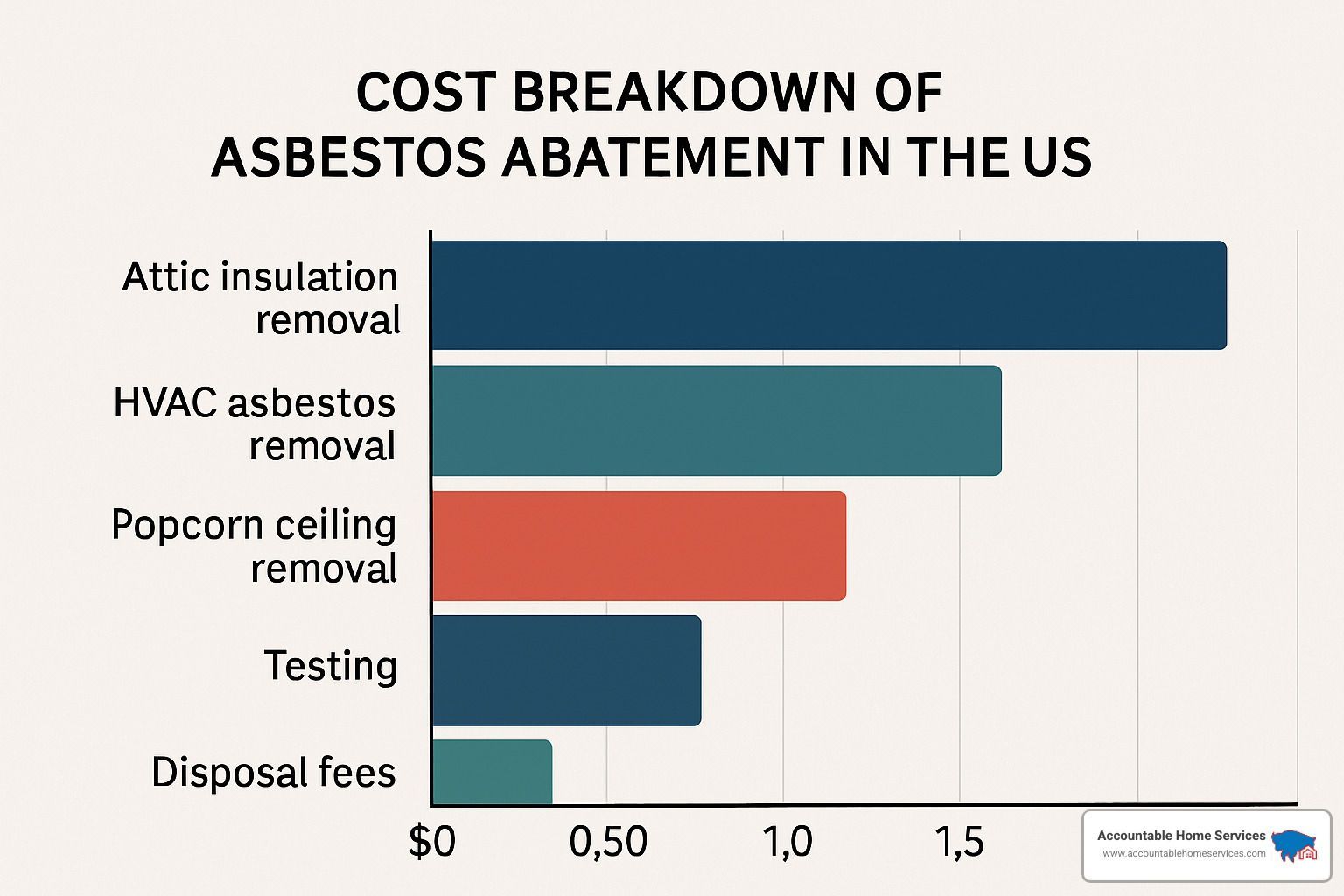
If you're wondering about specific materials, here's what we typically see in Denver:
Removing asbestos from attic insulation runs about $11-$25 per square foot. HVAC systems are more complex at $35-$55 per square foot. That popcorn ceiling everyone loves to hate? Usually $3-$7 per square foot plus disposal fees.
Now, about those regulations – they're non-negotiable in Colorado. Licensed asbestos abatement contractors must:
- Notify state authorities before starting larger projects
- Follow strict work practices established by OSHA and the EPA
- Use authorized disposal facilities (and keep the paperwork)
- Maintain detailed records of everything
- Ensure all workers have proper certification
The consequences for cutting corners? Steep. While Colorado's penalties vary by violation, I've seen other states impose fines up to $10,000 per day per violation. That doesn't even touch on the potential liability and health risks that come from improper handling – costs that can dwarf any upfront savings.
Avoiding Expensive Mistakes
"I found a guy who said he'd remove my popcorn ceiling for half what other companies quoted," a Denver homeowner recently told me. "When I asked about his containment plan and clearance testing, he just stared at me blankly. That's when I knew I needed a real professional."
After seeing hundreds of projects, I can tell you the most expensive mistakes homeowners make:
DIY removal attempts are penny-wise but pound-foolish. I've seen too many DIY projects turn into much more expensive professional remediation – not to mention the health risks.
Hiring unlicensed contractors might save you initially, but the potential liability and rework needed can be astronomical.
Partial abatement often leads to cross-contamination, essentially spreading the problem throughout your home.
Verbal agreements leave too much room for misunderstandings about scope and cost. Get everything in writing!
Improper disposal can result in hefty fines. Always request waste manifests proving proper disposal at authorized facilities.
If cost is a major concern, there may be help available. Some homeowners qualify for assistance through:
- Homeowner's insurance (especially if asbestos is finded during covered damage repair)
- Special trust funds (like the Zonolite Attic Insulation Trust for vermiculite removal)
- Tax deductions for certain improvements
- Home improvement loans with favorable terms
At Accountable Home Services, we understand that asbestos abatement is an unexpected expense for most homeowners. That's why we provide detailed, transparent quotes and can discuss financing options that make safety affordable. Because when it comes to protecting your family from asbestos, the most expensive choice is usually cutting corners.
Frequently Asked Questions about Asbestos Abatement Contractors
Homeowners often have pressing questions when facing potential asbestos issues. As someone who's guided hundreds of Denver families through this process, I've compiled the most common questions we receive at Accountable Home Services.
How much does residential abatement cost?
When clients call about asbestos removal, cost is usually their first concern. In Denver, most residential projects typically range from $1,200 to $3,200, though this can vary widely based on your specific situation.
As experienced asbestos inspector Anthony Rich explains, "There are so many factors involved, but abatement can range from a few hundred dollars to a few thousand dollars. And if it's a certain type of material, it can be tens of thousands of dollars."
Your final price depends on several key factors: the size of the affected area, the type of material being removed, accessibility challenges, testing requirements, and local disposal fees. For example, removing asbestos from popcorn ceilings generally costs less per square foot than removing it from HVAC systems or pipe insulation.
Rather than guessing at costs, I always recommend scheduling a free inspection. This allows us to provide an estimate custom to your home's specific needs without any obligation.
Can I stay in my home during removal?
This is perhaps the most practical concern for busy families. The straightforward answer is that in most cases, you'll need to temporarily relocate during active asbestos removal work. While it might seem inconvenient, this precaution exists for good reason.
Even with proper containment procedures in place, safety guidelines and regulatory requirements typically don't allow occupancy during active removal. The good news? Many projects can be completed in just 1-2 days, making temporary relocation more manageable than you might expect.
For some smaller, well-contained projects, you might be able to remain in distant parts of your home, depending on:
- Your home's layout and ventilation system
- The location and size of the affected area
- The specific materials being removed
- Local regulations governing the project
At Accountable Home Services, we understand disruption is stressful. We'll work with you to schedule the project at your convenience and complete it as efficiently as possible while maintaining safety standards.
What documents should the contractor provide after completion?
After we complete an asbestos abatement project, you should receive a comprehensive documentation package. These papers aren't just formalities—they're valuable proof that the work was done properly and safely.
Every professional asbestos abatement contractor should provide:
A project summary report detailing exactly what work was performed, where, and how. This document serves as your record of the specific materials removed and methods used.
Waste disposal manifests that prove all asbestos-containing materials were properly transported to and disposed of at authorized facilities. These documents are legally required and protect you from future liability.
Air clearance test results from independent third-party testing, confirming your home is safe for reoccupancy. This is your peace of mind in document form.
A visual inspection certification verifying that all asbestos materials identified in the scope of work were properly addressed.
Your final itemized invoice detailing all services performed and their costs.
Any applicable warranty information covering the work performed.
Recommendations for future monitoring or maintenance if needed.
These documents become especially important if you ever sell your home. In Colorado's real estate market, proper documentation of asbestos abatement is often requested during transactions involving older homes. Having these records readily available can streamline your selling process and provide reassurance to potential buyers.
A trustworthy contractor will never hesitate to provide complete documentation. If someone seems reluctant to commit to providing these records, consider it a serious red flag.
Conclusion & Next Steps
When it comes to asbestos abatement contractors, the journey might seem daunting at first, but with the right information and partner by your side, it becomes much more manageable. Here's what I've learned after helping hundreds of Denver homeowners through this process: proper asbestos abatement isn't a place to cut corners—it's an investment in what matters most.
Your family deserves a safe home, free from invisible threats that could impact their health for decades to come. And your home deserves care that preserves its value and integrity for years to come.
At Accountable Home Services, we've built our reputation on being that trusted partner for homeowners throughout the Denver metro area. When you work with us, you're not just getting a service provider—you're getting a team that truly cares about doing things the right way.
Our approach is simple but thorough:
- We start with a comprehensive inspection and testing to identify all potential hazards
- We provide clear, detailed estimates with no surprise costs later
- Our abatement technicians are fully certified and experienced in handling even complex situations
- We use only state-of-the-art containment and removal equipment that exceeds safety standards
- After completion, we arrange independent clearance testing for your absolute peace of mind
- You'll receive complete documentation for your records (which can be valuable if you ever sell your home)
If you've been lying awake at night worried about that popcorn ceiling or those old floor tiles, the first step toward peace of mind is a professional inspection. It's not just about compliance with Colorado law (though that's important too)—it's about protecting what matters most to you.
I remember helping a family in Arvada who had put off their kitchen remodel for years because they were concerned about asbestos in the flooring. After we safely removed it, the wife told me, "I feel like I can finally breathe in my own home again." That's why we do what we do.
For homeowners throughout Denver, Boulder, Longmont, Westminster, and surrounding communities, we're happy to offer free initial consultations. We'll discuss your specific concerns and develop a plan that fits both your needs and your budget. There's no pressure—just honest guidance from people who understand.
Don't let asbestos concerns keep you from creating the home you deserve. With the right professional help, you can address these issues safely and move forward with confidence, knowing your home is truly a healthy sanctuary for your family.

